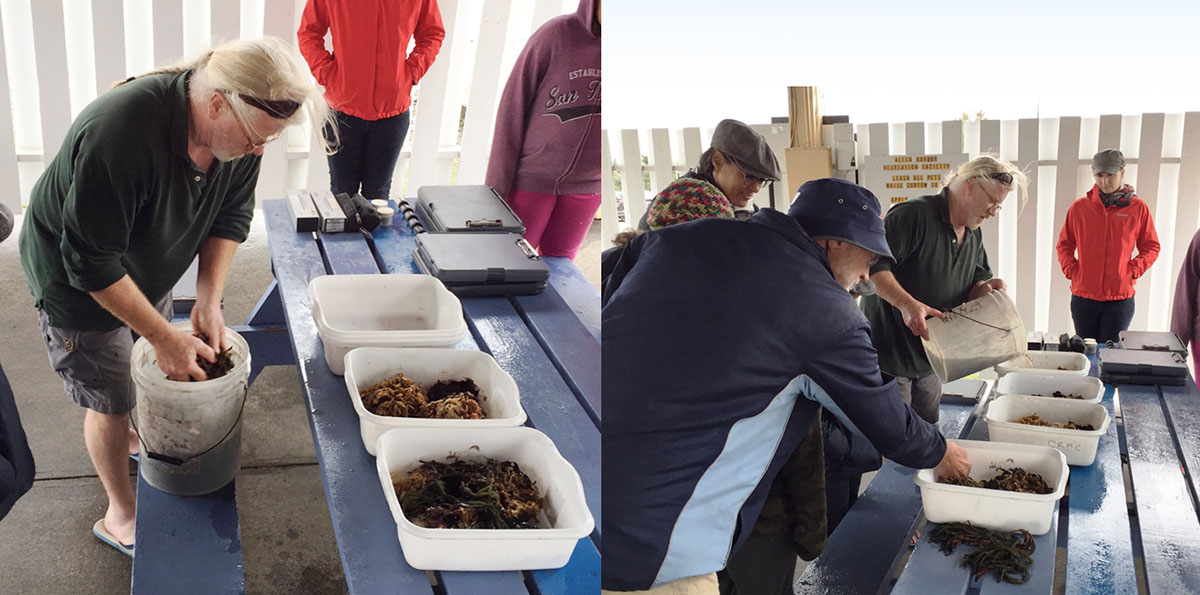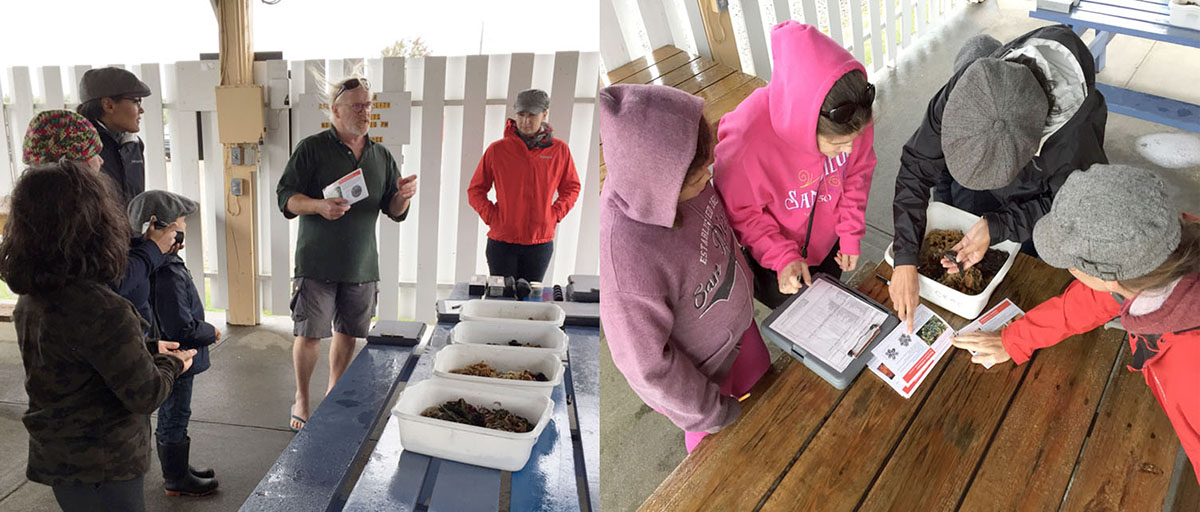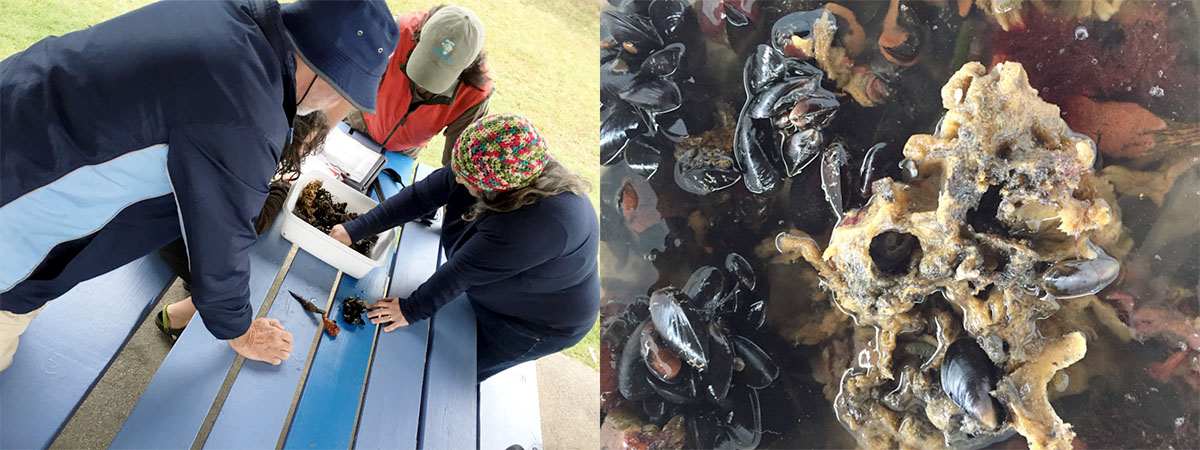
RI Coastal Resources Management Council
...to preserve, protect, develop, and restore coastal resources for all Rhode Islanders

...to preserve, protect, develop, and restore coastal resources for all Rhode Islanders
Coastweeks 2017 AIS training with CRMC: Slow and steady is best
QUONSET – For Kevin Cute, marine resources specialist and marine aquatic invasive species (AIS) program manager at the R.I. Coastal Resources Management Council (CRMC), the old adage of “measure twice, cut once” could apply to identifying potential marine invaders.
“The worst thing is to make a hasty, false identification, send out the alarm bells and misidentify something based only on what it looks like,” he said to a hardy group of participants in this year’s Coastweeks 2017 monitoring session. Plagued by driving wind and rain on the late-September morning, Cute stressed careful study, regardless of the weather. “If that happens, you’ve done yourself and the scientific community a disservice.”
According to Cute, as stewards of the state’s waters under the Public Trust Doctrine, all Rhode Islanders have the responsibility of managing Narragansett Bay. As part of the annual Coastweeks celebration, a month-long series of events geared toward getting Rhode Islanders outside to learn about and celebrate the coast and sponsored by the CRMC and Rhode Island Sea Grant, Cute led a morning of hands-on monitoring on September 22 at Allen Harbor Marina in North Kingstown. Though the rough weather did not allow for participants to gather samples themselves – by lying on their stomachs to scrape the underside of the docks at the marina – Cute insisted their work was still vital.
“I do rely on your IDs for my research,” he told them as he moved from group to group, guiding them through the identification process and protocols. Part of the monitoring work includes taking water temperature, measuring salinity and taking and identifying samples from the docks. Salinity and water temperate are both closely correlated to the presence and success of some marina invasives, Cute said. (Tunicates, for example, do best in higher salinity environments.)
“It’s very important to learn how aquatic invasive species are impacting our local waters,” he told the group, which consisted of some interested adults, teenagers there are part of a school project, and some homeschoolers very passionate about the marine environment. “We collect random samples to get a true sense of the (invasive and native) community.”
Cute collected samples from the docks before the monitoring session, and divided them into white tubs, commenting on the variety of specimens in each. Some of the positive identifications included Botryllus schlosseri, or star tunicate, Botrylloides violaceus, or orange or red sheath tunicate, Codium fragile ssp. Tomentosoides, or green fleece/dead man’s fingers, and Carcinus maenas, or European green crab.
The CRMC has been monitoring for aquatic invasive species since the Rhode Island AIS Management Plan was approved in 2007 by the federal Aquatic Nuisance Species Task Force. The plan supports long-term monitoring for AIS in the state’s marine ecosystems and provides for actions to prevent the introduction of AIS, control their impacts, and eradicate those already present whenever possible. The plan encourages an Early Detection Rapid Response (EDRR) network that includes monitoring and an organizational framework to provide resources to minimize impacts of invasives. Cute and his volunteer monitors visit sites all over the state, and record their findings as part of this effort. For more information on the CRMC’s AIS monitoring and plan, go to http://www.crmc.ri.gov/invasives.html.
How do they get here?
According to Cute, ballast water from commercial shipping, as well as recreational boaters, are primary vectors (though there has been no definitive research into the impacts of recreational boaters). A non-native species must satisfy at least one of three requirements to be considered a marine aquatic invasive species: 1) it must cause environmental harm; 2) it must cause economic harm; and 3) it must cause harm to human health.
“Once they’re here, there’s not a lot you can do about it, so prevention is key,” Cute said at last year’s event. Each invasive threat could have devastating ecological impacts to the native community, many times the result of human carelessness. “You’re playing Russian roulette with AIS – all it takes is the wrong one getting in.”

Above, left, CRMC’s Kevin Cute puts samples into bins for the participants.

Cute talks about marine aquatic invasive species and their identification (left). At right, participants try to identify specimens.

At left, identifying samples. At right, some of what was collected, including orange or red sheath tunicates.